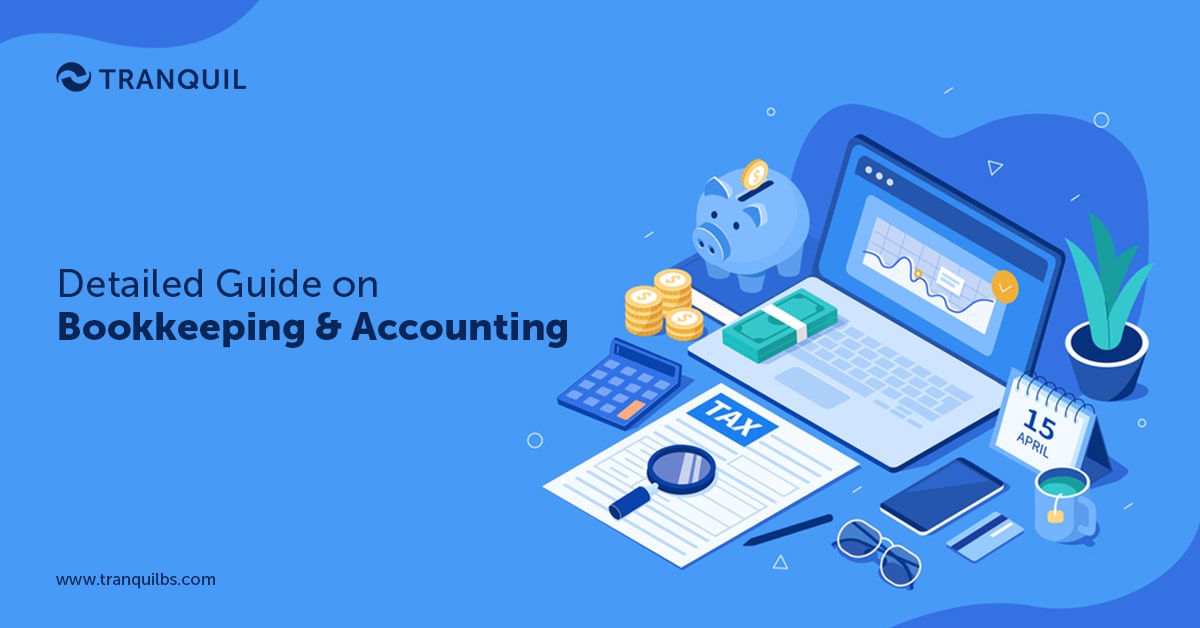
Job Costing – Everything You Wanted to Know About
In certain types of businesses, it is important to track individual costs related to specific tasks or jobs – and this is referred to as job costing.
What Is Job Costing?
Also named project-based accounting, job costing refers to the accounting of expenses and income for every individual project.
It studies every project minutely and breaks down materials, labor, and overhead costs, instead of performing job estimation.
Businesses of all sizes use this accounting tool – especially if they commission individual projects or tasks.
It is most commonly used in the construction industry, but also in manufacturing, law firms, creative agencies, etc.
Job costing allows businesses to assess individual jobs and check if expenses can be reduced when similar projects are undertaken in the future.
ALSO READ: How Does Landed Cost Affect the Cost of Inventory?
Features of Job Costing
In the job costing method of accounting, the expense associated with each job is calculated individually, allowing you to identify the jobs that made profits and those which did not.
This provides a template for establishing the cost of similar jobs to be executed in the future.
By calculating the variances or comparing estimated costs with the actuals, it becomes a valuable tool to manage and keep costs under control.
Who Uses Job Costing?

Any business that offers products or services for completing a customer’s project can use job costing.
These are the industries that use job costing primarily:
- Construction
- Shipbuilding
- Foundries
- Automotive garages
- Printing presses
- Film studios
- Hospitals and doctor’s practices
- Private investment firms
- Engineering firms
- Advertisement agencies
- Law firms
- Distribution agencies
- Food processing companies
A business that uses job costing has certain common characteristics like:
- Customized production as per customer requirement
- Distinct lots of products
- Manufactured products are not uniform in nature
ALSO READ: Benefits of ERP Software in Construction Industry
How to Calculate Job Cost

Let us look at the job costing procedure and how the cost is allocated for the various activities:
Materials
- When they are procured and stored in the warehouse – the allocation of any scrap or spoiled material is to the overhead costs initially, and from here it is allocated at a later stage when necessary.
- When they are retrieved from the store and assigned to a specific job, any abnormal loss is directly charged to the cost of goods that were sold. Once the job order is completed, the cost associated with the whole job is moved to finished goods inventory from work in progress inventory.
- When the goods are sold, the asset cost is transferred to the cost of goods sold account from inventory when the sale transaction is recorded.
ALSO READ: What are Backorders and How to Avoid Them?
Labour
- The hours logged by an employee are charged to a particular job, and then later assigned to each job depending on the wages paid.
- Direct labor, if traceable directly, is charged to specific jobs, and indirect labor is initially charged to the overhead cost pool from which it is allocated to different open jobs.
Overheads
- All overhead costs are just allocated to the overhead cost pool initially; later, they are assigned to individual jobs.
- Non-direct costs are assigned to open jobs from the overhead cost pools depending on the cost usage measure.
- Standard costs are assigned from the overhead cost pool by studying the historical cost data to determine the per-unit standard cost for each activity. These amounts are then assigned to jobs depending on how many activity units have been performed for each job.
- The allocated overhead cost is subtracted from the actual cost incurred to arrive at the difference. The variances are accounted for in any of the following ways:
o Charged directly to the cost of goods sold
o Allocated to each activity like work-in-progress, cost of goods sold, or finished goods, depending on their closing balances
o Assigned to ongoing jobs of the reporting period
ALSO READ: What is Negative Inventory?
What is Job Cost Accounting?

Now that we have a fair idea of what job costing is, let us now see how to calculate total job cost.
We need to determine the cost of materials, labor, and overheads on each job, and this is how the accounting is carried out.
Calculation of Material Costs
We need to account for every expense associated with materials used for a particular job.
If we talk about the construction industry, this would include everything from steel and cement to lumber and wiring, tiles and paint to screws and switches.
It is recommended that you add a small margin to the exact cost so that you can recover costs related to wastage, delivery charges, and so on.
Calculation of Labor Costs
Here we need to work out how much it costs the business with regard to the salaries and wages paid to all the employees working on a project each day.
You need to multiply the daily payroll amount by the number of days estimated for the completion of the job.
It is possible you have sub-contractors for certain activities that you don’t directly do; in such cases, the costs associated with those activities have to be factored into the total labor cost for each job – it would be a good idea to get estimates from the various contractors you have.
ALSO READ: ERP vs CRM
Estimation of Applied Overhead
Calculating overheads is quite difficult, as exact figures are hard to come by, and you often have to depend on educated guesswork.
Allocating expenses like office rent, administrative expenses, equipment depreciation, and so on, is not straightforward and easy.
Some companies have a policy of applying a flat rate to every project, like say 10 or 15 percent for each job.
An experienced accountant can help in the analysis of your business, and the development of a specific approach to overhead – you can of course, always fall back on a predetermined overhead rate calculation.
If we had to write how job costing is conducted as an equation, it would look like this:
Total Job Cost = Direct Labor + Direct Materials + Applied Overhead
What Is a Predetermined Overhead Rate?

It is simply a calculation used to establish approximated overhead costs for each job in a given time period.
Businesses usually make budgets for a year that mention the estimated activity and overhead for that particular year.
Using these estimates, you can arrive at an overhead rate that can be applied to every specific job.
The equation for calculating the predetermined overhead rate is:
Estimated Overhead / Estimated Activity.
The budget is likely to include various estimates for activities; you should ideally choose the activity that is most directly related to the overhead costs for your company, like the estimated hours of direct labor.
ALSO READ: Guide on ERP in Production Planning
Predetermined Overhead Rate Example
Let’s assume you have a construction business, and you use job costing; you want to arrive at the predetermined overhead rate to use for this.
You estimate that in 2022, you will incur 400,000 Riyals in overheads and that your employees will work 8000 hours.
In that case, your calculation would be:
Overhead / direct labor hours -> 400,000 / 8000 = 5 Riyals per hour direct labor
You can now apply this calculation of predetermined overhead rate to jobs to conduct job costing, as the overhead cost applied.
You will add 5 Riyals to the specific job for every direct labor hour, and this becomes your applied overhead.
This is what you add to the cost of direct labor and materials cost to arrive at the total job cost.
Job Costing Example
Now we have the applied overhead cost – let’s assume that it is 30,000 Riyals. You have spent 15,000 Riyals on direct labor, and 10,000 Riyals on materials. The total job costing is now:
30,000+ 15,000+ 10,000 = 55,000 Riyals. (going by the formula, Total job cost = direct labor + direct materials + applied overhead)
ALSO READ: ERP Modules and Features
Advantages of Job Costing

Since we have seen how we can calculate the total job cost and how expenses are allocated, let’s take a quick look at the advantages of job costing:
- Determine profitability for individual jobs
- Get in-depth cost analysis of labor, materials, and overheads for individual jobs whenever you need
- Ensure greater efficiency by focusing on costs of each job
- Prepare estimates easily
- Calculate variances by comparing actual and estimated costs
- Points out jobs that are not profitable
- Enables drafting of accurate product quotations
When to Use the Job Cost Formula
The exact time to use this formula varies according to businesses, but ideally, it is to be calculated on completion of a job.
A job cost sheet is maintained to record all costs as the job is in progress.
The following is tracked on this sheet:
- Direct materials – used on the job, and their cost
- Direct labor – hours worked by employees and managers on the job
- Per hour overhead costs
- If so applicable, the service product cost or unit cost.
By estimating the number of direct material and labor costs, the job cost formula can be applied to arrive at an estimated total cost; if you use the services of a professional accountant for doing this, fees paid to them are also to be included.
Once the service is completed, the job sheet can be used to draft a final invoice to be generated and sent to the customer.
ALSO READ: How Do ERP Systems Work?
What is a Job-Order Costing?

Job order costing system is used by businesses that regularly create unique products for their customers so that they can easily track every order.
A job order costing system is helpful in ensuring that the effort and resources spent in making a product will be profitable for the business.
There are many factors involved in creating a job order costing system so that we can make sure that the cost of each job is precisely calculated.
This system is used in businesses that receive small orders from customers for unique product batches; here, the price of every product is separately computed.
It also helps to ensure that the product is priced in such a way that it’s not unreasonably expensive for the customer, yet brings in decent profit for the company.
ALSO READ: Benefits of ERP for Accounting and Financial Management
Job order costing systems use financial resources like invoices from suppliers, payroll records, overhead cost allocations, and material costs for information gathering.
Then with the help of a job sheet or job order database, the cost is calculated, while tracking individual products with a unique ID number.
Every item in the system has a record for job cost that shows the materials used in creating the item, the number of employees that worked, the number of hours required in making it, and the overhead cost for the product.
This way, accountants can accurately track the expense on every item, and the present inventory and help prevent the occurrence of unexpected loss.
Documents Used
For job order costing, the main documents used are:
Materials Requisition Form
This helps track materials used and contains information like
- Date of retrieval from inventory
- Unique job ID
- Exact quantity retrieved
- Cost of material items
- Total items retrieved
- Who requested, priced and received the items
ALSO READ: How ERP Software is Playing Role to Improve Business Productivity?
Job Cost Sheet
We have already discussed earlier how accountants use job sheets to track the spending on each job, it may include:
- Job start date
- Completion date
- Shipment date
- Customer information
- Material, labor, and overhead cost
- Summary of the total cost
Time Ticket
Employees usually submit a timesheet to show work done by them. It includes:
- Employee ID and name
- Job number working on
- List of jobs and date each started
- Hours required to complete the job
- Hourly rate payable
- Total job cost
Are you in a business where it’s essential to calculate the cost of each job? At Tranquil ERP, we have the technology and expertise to make your work simple. Our robust ERP software has a powerful project management module with efficient estimation, activity, and cost features. Do schedule a demo at your convenience to see how this can help your business.



